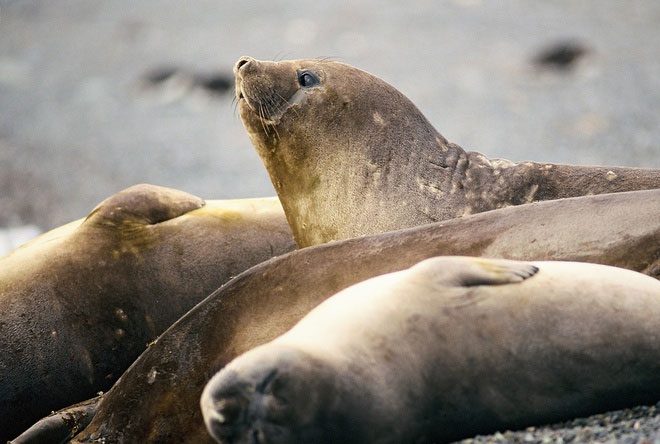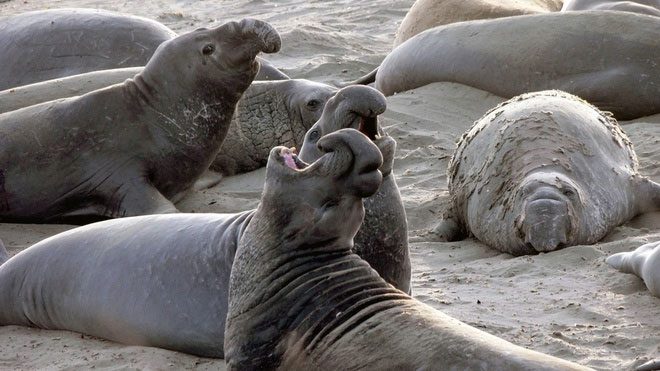A study reveals that male elephant seals, competing for mating with around 100 females, face significant reproductive pressures leading to early death.
A recent study indicates that the extreme polygamous reproductive mechanism may cause southern male elephant seals to die prematurely. Conducted on 14,000 southern elephant seals (Mirounga leonina) at Macquarie Island in the southwestern Pacific, the research found that while the survival rates of males and females are nearly equal for pups, the survival rate of males rapidly declines after the age of 8, dropping to about 50%, whereas the survival rate of females remains steady at 80%.
The study was published in the Royal Society Open Science journal and reported by The Guardian.

Southern elephant seals exemplify the “extreme polygamous” reproductive mechanism found in some animal species. (Photo: GRID-Arendal).
According to The Guardian, there are also significant size differences between the two sexes of southern elephant seals: when fully grown, males can weigh nearly five times more than females. This size disparity typically begins to appear between the ages of 3 to 6 when the seals reach full maturity.
Sophia Volzke, the lead author of the study and a PhD candidate at the University of Tasmania, states that the largest male elephant seals have a reproductive advantage.
“They can only forage from the ocean,” she explains. “When they come ashore (to breed), they have to compete with other males for access to females. Therefore, they need to store energy to fight and survive on land without eating for several weeks.”
This species exhibits an “extreme polygamous system,” where a few dominant males—considered the kings of the beach—control a harem of females for breeding purposes.
“One male can mate with about 100 females,” Volzke notes. “With such a large scale, they may allow a younger male to assist in managing the group.”
She adds: “It depends on the management range and the geography of the beach—if the beach stretches out, there are likely to be several smaller groups. Only about 4% of males become beach masters.”

A male elephant seal surrounded by females. (Photo: The Atlantic).
Researchers believe that competitive pressures compel adult males to gain weight as quickly as possible, leading to lower survival rates since males have to forage on land, in areas that are at higher risk of predation. “Mature males focus their foraging in shallow waters. These are hotspots for coastal predators like orcas… or sleeping sharks,” the study indicates.
Volzke mentions that although male elephant seals begin to become reproductively mature at 6 years of age, they rarely compete with other males until they are 9 to 12 years old.
Southern elephant seals spend most of the year underwater. Volzke adds that males typically come ashore in August on Macquarie Island to establish their territory. “Females arrive in September and form groups… the males will come and protect those groups.”
“We can observe a male… coming ashore in August and challenging another male in the same area. If it loses the fight, it will return to the ocean,” Volzke explains. “Dominant males often have very loud calls that intimidate other males, meaning some males cannot come ashore at that time.”


















































